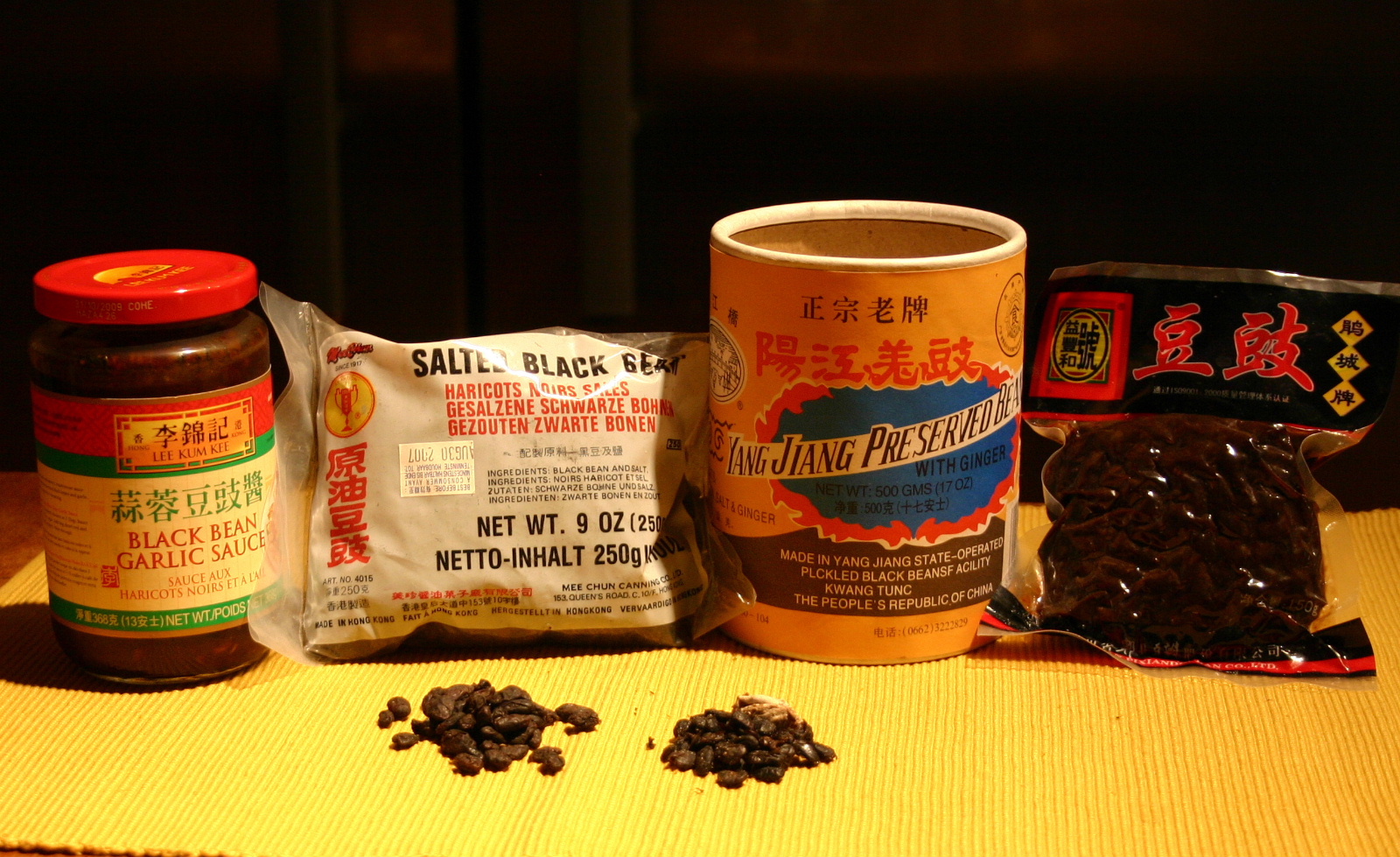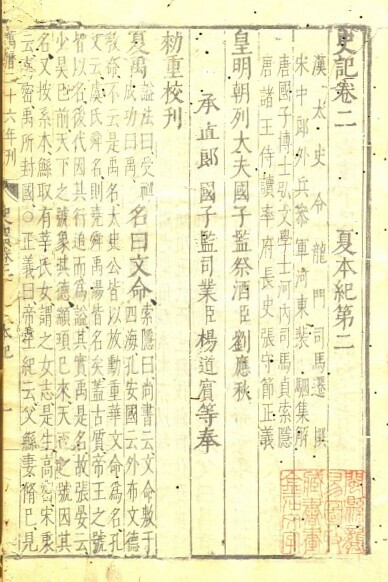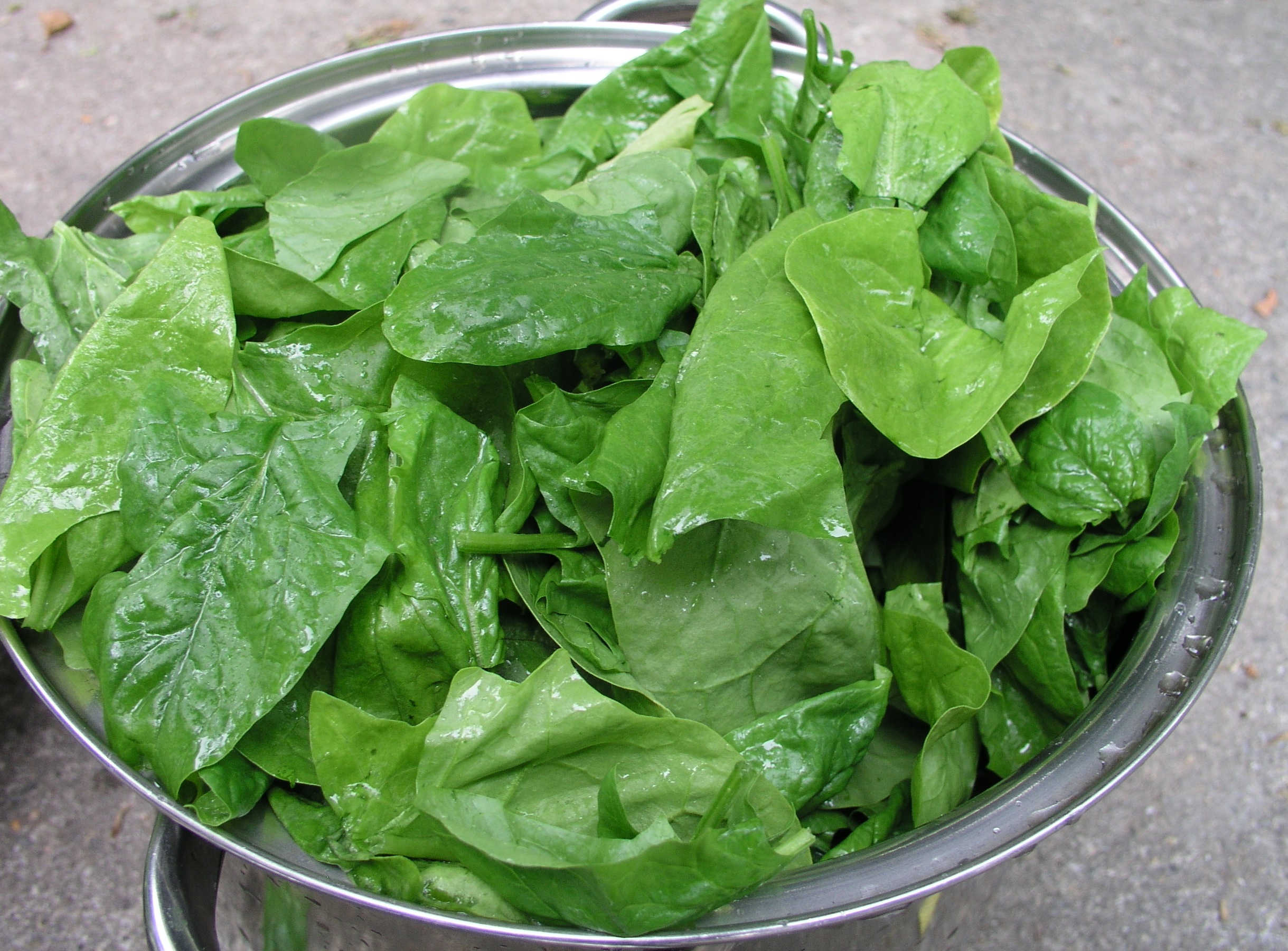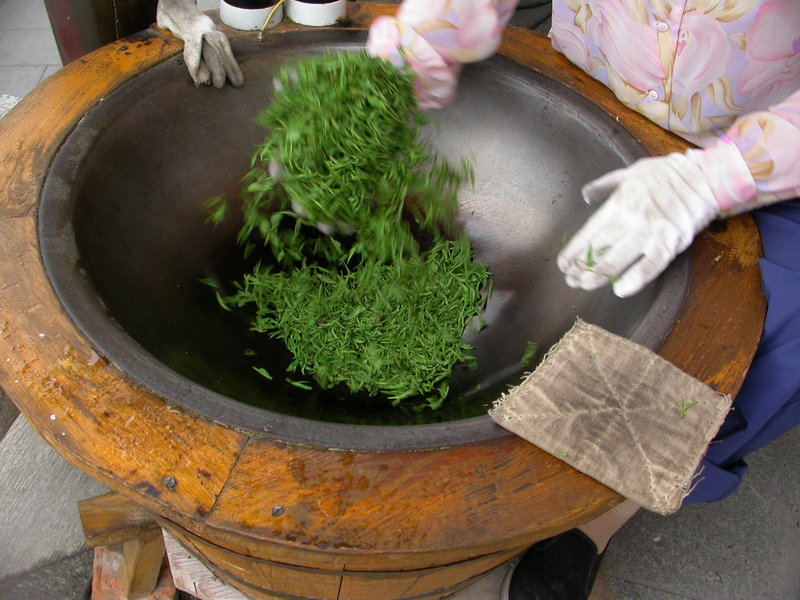|
Douchi
''Douchi'' is a type of fermented and salted black soybean most popular in the cuisine of China, where they are most widely used for making black bean sauce dishes. Shurtleff, W.; Aoyagi, Abr>History of Fermented Black Soybeans (165 B.C. to 2011) Lafayette, California: Soyinfo Center, 2011 ''Douchi'' is made by fermenting and salting black soybeans using Qu ( zh, c=麹, p=Qū), which is similar or identical to the Miso ferment, Koji. Douchi can be classified as ''Aspergillus''-type Douchi, '' Mucor''-type Douchi, ''Bacterial''-type Douchi, or '' Rhizopus''-type Douchi. There are two main stages to the Douchi making process; first you make the Koji, then there is a prefermentation stage. There can also be a maturation or post fermentation stage, were the Douchi is mixed with other ingredients, like brine, and allowed to age. The black type soybean is most commonly used. The process turns the beans soft, and mostly semi-dry (if the beans are allowed to dry). Regular soybeans ... [...More Info...] [...Related Items...] OR: [Wikipedia] [Google] [Baidu] |
Chinese Cuisine
Chinese cuisine comprises cuisines originating from Greater China, China, as well as from Overseas Chinese, Chinese people from other parts of the world. Because of the Chinese diaspora and the historical power of the country, Chinese cuisine has profoundly influenced many other cuisines in Asia and beyond, with modifications made to cater to local palates. Chinese food staples such as rice, soy sauce, noodles, tea, chili oil, and tofu, and utensils such as chopsticks and the wok, can now be found worldwide. The world's earliest eating establishments recognizable as Restaurant, restaurants in the modern sense first emerged in Song dynasty China during the 11th and 12th centuries. Street food became an integral aspect of Chinese food culture during the Tang dynasty, and the street food culture of much of Southeast Asia was established by workers imported from China during the late 19th century. The preferences for seasoning and Chinese cooking techniques, cooking techniques in ... [...More Info...] [...Related Items...] OR: [Wikipedia] [Google] [Baidu] |
Records Of The Grand Historian
The ''Shiji'', also known as ''Records of the Grand Historian'' or ''The Grand Scribe's Records'', is a Chinese historical text that is the first of the Twenty-Four Histories of imperial China. It was written during the late 2nd and early 1st centuries BC by the Han dynasty historian Sima Qian, building upon work begun by his father Sima Tan. The work covers a 2,500-year period from the age of the legendary Yellow Emperor to the reign of Emperor Wu of Han in the author's own time, and describes the world as it was known to the Chinese of the Western Han dynasty. The ''Shiji'' has been called a "foundational text in Chinese civilization". After Confucius and Qin Shi Huang, "Sima Qian was one of the creators of Imperial China, not least because by providing definitive biographies, he virtually created the two earlier figures." The ''Shiji'' set the model for all subsequent dynastic histories of China. In contrast to Western historiographical conventions, the ''Shiji'' does no ... [...More Info...] [...Related Items...] OR: [Wikipedia] [Google] [Baidu] |
Fried Dace With Salted Black Beans
Fried dace with salted black beans is a canned food of Chinese origin. '' Cirrhinus molitorella'' (dace) is a fish from the Pearl River in China. ‘Dace’ is a trade name of ''Cirrhinus molitorella'' while ‘salted black beans’ refers to fermented black soybeans known as “ dau si” (豆豉) in Cantonese. Fried dace with salted black beans is made by combining dace with salted black beans and preserving it in oil afterwards. History Fried dace with salted black beans originated in Guangzhou in China. Before the industrialisation of China began in the 1950s, many Chinese from the Pearl River Delta region needed to go to Southeast Asia for work. They would fry the dace, preserve it with salted black beans and bring it with them because they were not used to eating foreign food. This tradition gradually transformed into a canned food business. The first canned fried dace with salted black beans was produced by Guangzhou Guangmaoxiang Canned Food Factory in China in 1893. Thi ... [...More Info...] [...Related Items...] OR: [Wikipedia] [Google] [Baidu] |
Spare Ribs
Spare ribs (also side ribs or spareribs) are a variety of ribs cut from the lower portion of a pig, specifically the belly and breastbone, behind the shoulder, and include 11 to 13 long bones. Meat and fat cover the bones. Spare ribs (pork) are distinguished from short ribs. Spareribs are typically cooked low and slow, either smoked, grilled, or braised. Pork spare ribs are cooked and eaten in various cuisines around the world. They are especially popular in Chinese and American Chinese cuisine, in which they are generally called ''paigu'' (), and in the cuisine of the Southern United States. Preparation Chinese spare ribs Basted spare ribs on an outdoor grill Asia In Chinese cuisine, pork spare ribs are generally first cut into sections, which then may be fried, steamed, or braised. In the Cantonese cuisine of southern China, spare ribs are generally red in color and roasted with a sweet and savory sauce. This variety of spare ribs is grouped as one of the most c ... [...More Info...] [...Related Items...] OR: [Wikipedia] [Google] [Baidu] |
Tempeh
Tempe or tempeh (; , ) is a traditional Indonesian food made from fermented soybeans. It is made by a natural culturing and controlled fermentation process that binds soybeans into a cake form. A fungus, '' Rhizopus oligosporus'' or '' Rhizopus oryzae'', is used in the fermentation process and is also known as tempeh starter. It is especially popular on the island of Java, where it is a staple source of protein. Like tofu, tempeh is made from soybeans, but it is a whole-soybean product with different nutritional characteristics and textural qualities. Tempeh's fermentation process and its retention of the whole bean give it a higher content of protein, dietary fiber, and vitamins. It has a firm texture and an earthy flavor, which becomes more pronounced as it ages. Etymology The term ''tempe'' is thought to be derived from the Old Javanese , a whitish food made of fried batter made from sago or rice flour which resembles '' rempeyek''. The historian Denys Lombard also sugg ... [...More Info...] [...Related Items...] OR: [Wikipedia] [Google] [Baidu] |
Leaf Vegetable
Leaf vegetables, also called leafy greens, vegetable greens, or simply greens, are plant leaves eaten as a vegetable, sometimes accompanied by their petioles and shoots, if tender. Leaf vegetables eaten raw in a salad can be called salad greens, whereas leaf vegetables eaten cooked can be called pot herbs. Nearly one thousand species of plants with edible leaves are known. Leaf vegetables most often come from short-lived herbaceous plants, such as lettuce and spinach. Woody plants of various species also provide edible leaves. The leaves of many fodder crops are also edible for humans, but are usually only eaten under famine conditions. Examples include alfalfa, clover, and most grasses, including wheat and barley. Food processing, such as drying and grinding into powder or pulping and pressing for juice, may involve these crop leaves in a diet. Leaf vegetables contain many typical plant nutrients, but their vitamin K levels are particularly notable since they are photos ... [...More Info...] [...Related Items...] OR: [Wikipedia] [Google] [Baidu] |
Bitter Melon
''Momordica charantia'' (commonly called bitter melon, cerassee, goya, bitter apple, bitter gourd, bitter squash, balsam-pear, karela, karavila and many more #Uses, names listed below) is a tropical and subtropical vine of the family Cucurbitaceae, widely grown in Asia, Africa, and the Caribbean for its edible fruit. Its many variety (botany), varieties differ substantially in the shape and bitterness of the fruit. Bitter melon originated in Africa, where it was a dry-season staple food of ǃKung people, ǃKung hunter-gatherers. Wild or semi-domesticated variants spread across Asia in prehistory, and it was likely fully domesticated in Southeast Asia. It is widely used in the cuisines of East Asian cuisine, East Asia, South Asian cuisine, South Asia, and Southeast Asian cuisine, Southeast Asia. Description This herbaceous, tendril-bearing vine grows up to in length. It bears simple, Phyllotaxis, alternate leaves across, with three to seven deeply separated lobes. Each plan ... [...More Info...] [...Related Items...] OR: [Wikipedia] [Google] [Baidu] |
Stir Frying
Stir frying ( zh, c= 炒, p=chǎo, w=ch'ao3, cy=cháau) is a cooking technique in which ingredients are fried in a small amount of very hot oil while being stirred or tossed in a wok. The technique originated in China and in recent centuries has spread into other parts of Asia and the West. It is similar to sautéing in Western cooking technique. Wok frying may have been used as early as the Han dynasty (206 BC – 220 AD) for drying grain, not for cooking. It was not until the Ming dynasty (1368–1644) that the wok reached its modern shape and allowed quick cooking in hot oil. However, there is research indicating that metal woks and stir-frying of dishes were already popular in the Song dynasty (960–1279), and stir-frying as a cooking technique is mentioned in the 6th-century AD Qimin Yaoshu. Stir frying has been recommended as a healthy and appealing method of preparing vegetables, meats, and fish, provided calories are kept at a reasonable level. The English-lan ... [...More Info...] [...Related Items...] OR: [Wikipedia] [Google] [Baidu] |
Fish
A fish (: fish or fishes) is an aquatic animal, aquatic, Anamniotes, anamniotic, gill-bearing vertebrate animal with swimming fish fin, fins and craniate, a hard skull, but lacking limb (anatomy), limbs with digit (anatomy), digits. Fish can be grouped into the more basal (phylogenetics), basal jawless fish and the more common jawed fish, the latter including all extant taxon, living cartilaginous fish, cartilaginous and bony fish, as well as the extinct placoderms and acanthodians. In a break to the long tradition of grouping all fish into a single Class (biology), class (Pisces), modern phylogenetics views fish as a paraphyletic group. Most fish are ectotherm, cold-blooded, their body temperature varying with the surrounding water, though some large nekton, active swimmers like white shark and tuna can hold a higher core temperature. Many fish can communication in aquatic animals#Acoustic, communicate acoustically with each other, such as during courtship displays. The stud ... [...More Info...] [...Related Items...] OR: [Wikipedia] [Google] [Baidu] |
Mapo Tofu
Mapo tofu () is a popular Chinese dish from Sichuan province. It consists of tofu set in a spicy sauce, typically a thin, oily, and bright red suspension, based on douban (fermented broad bean and chili paste), and douchi (fermented black beans), along with minced meat, traditionally beef. Variations exist with other ingredients such as water chestnuts, onions, other vegetables, or wood ear fungus. One account indicates that the dish existed as early as 1254, in a suburb of Chengdu, the capital city of Sichuan. Other accounts indicate it originated at a Chengdu restaurant in the 1860s–1870s. Etymology and history "Ma" stands for ''mázi'', , which means pockmarks. "Po" is the first syllable of ''pópo'', , which means an old woman or grandma. Hence, ''mápó'' is an old woman whose face is pockmarked. It is thus sometimes translated as "pockmarked grandma's beancurd". Historical records tie the history of mapo tofu to Chen Mapo restaurant in Chengdu. It was opened in 1862 ... [...More Info...] [...Related Items...] OR: [Wikipedia] [Google] [Baidu] |








